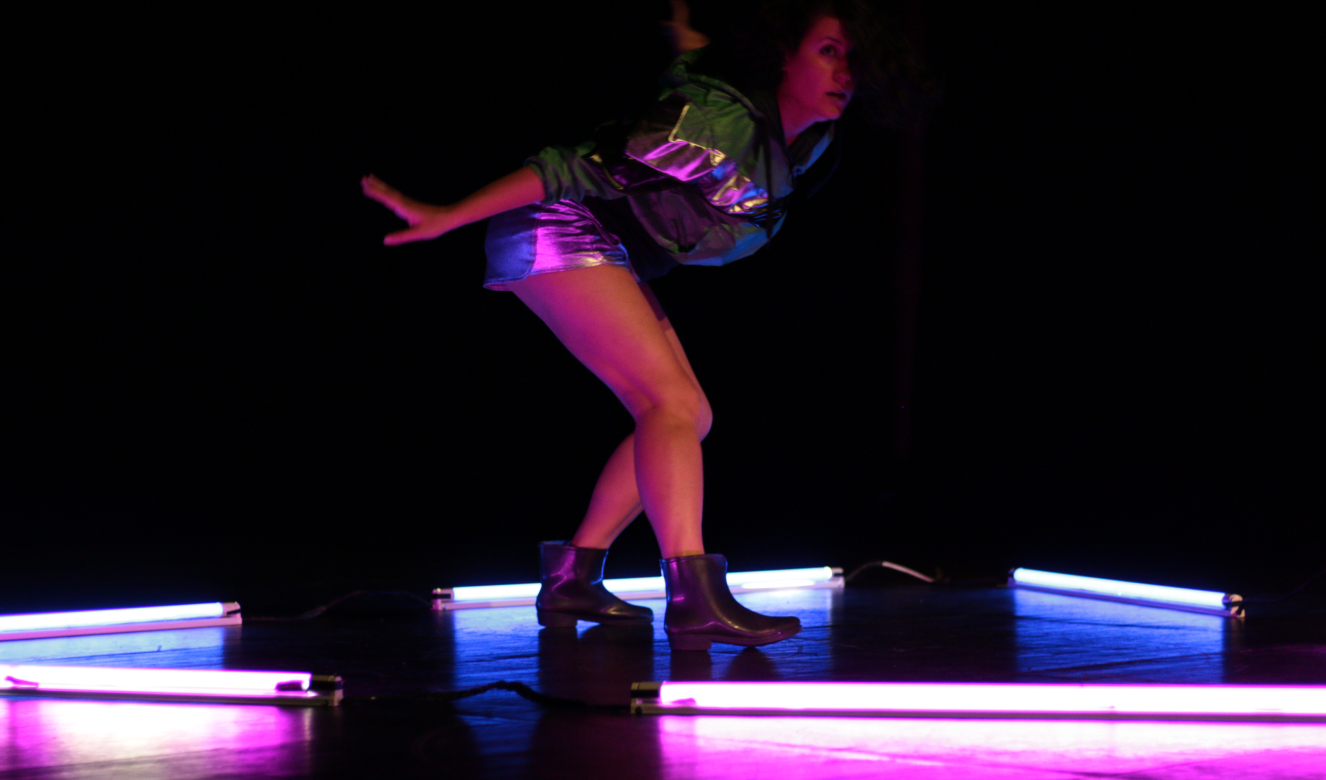
Between dance and cinema
When I was five years old, I invented my performance in the living room at home, on the square of the carpet, or on the door frame. I went to a body expression class and I liked it. My mother kept looking and found Margarita Bali’s studio, where I trained with Celina Goldin Lapaco, who was my teacher from the age of six to seventeen.
Classical dancing never generated fantasies in me, although some virtuosity maybe did: “I want to have my leg over here, I want to do eight turns”. But it didn’t call to me at the level of expression. As a child, there were two films that marked me. One was Singin’ in the Rain. I never tapped, but I remember the mystery of those shoes that made noise, that made music. That fascinated me. And Carmen, by Carlos Saura, with Antonio Gades. It was flamenco and had some dance and some ballet mixed in. What caught my attention, what moved me, went far beyond the formal.
In adolescence, from the time I started high school until the fourth year, I cut dance. I was very enthusiastic about the cinema. I used to go to the movies and to cycles, I rented VHS and DVDs. I had a grandfather who was very self-taught, a great reader and a great film buff. He didn’t even finish elementary school, he was a working immigrant who since he was a little boy used to save his pennies to go to the movies. And he remembered the name of the actor or actress of each classic. I used to ask him to tell me the titles of movies and that’s how I was learning. Around the same time I entered dance school, I signed up for Image and Sound Design. In the beginning, I had signed up to study Literature at the UBA. I remember crying in my room, telling my parents: “I don’t know if I want to do Letters; I just want to dedicate myself to dance”. And they reassured me. They always supported me, but I had the self-imposition of doing a more theoretical university career in addition to studying dance. In the end, I decided to pursue dance.
Dance was with me, it was part of me and I was not going to abandon it. I was lucky because since I was a child my parents saw that I was interested in this and they looked for a good teacher. You never forget those teachers. They are life’s companions. Besides training you in the discipline, they train you as a person.
There are times when I don’t dance because other things invade my daily life. And when I come back, it is happiness that returns. When I dance I have a better mood, and ideas come out in a different way. I start dancing and everything falls into place in a different way. It is, without a doubt, happiness and health. What happens in your head, at the same time happens in your body. In addition to intellectualizing the emotions you feel, you either tighten the pit of your stomach or your skin gets bristly. Dance helps me to walk along the healthiest paths. Dancing is good for you.
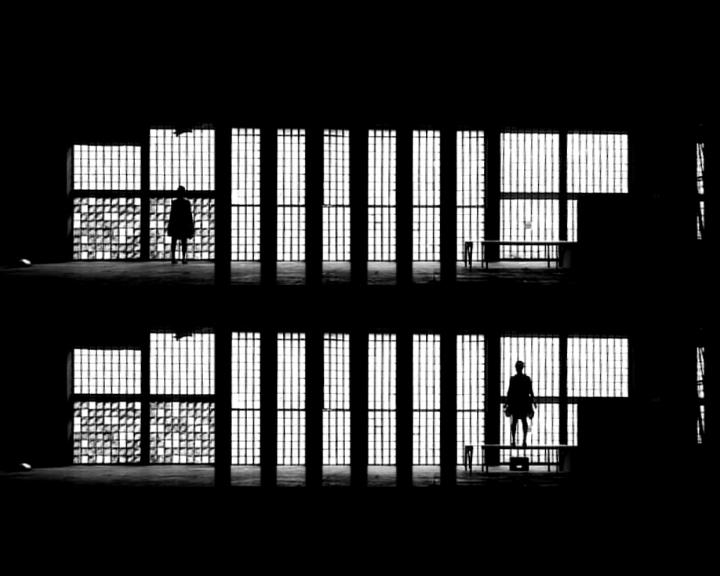
Dancing and teaching to find me
The role of director and the role of performer, for me, have always been linked. As a performer, I worked a lot on the composition of solos. I worked with artistic collectives and with people from other disciplines, but always self-directing.
The direction of others is more linked to teaching. A couple of years ago I felt the need to be outside the stage, in the role of director. One can go into other details and it is a different kind of work, which also interests me. As a teacher, there is something about accompanying processes and providing tools, making things available so that others can find themselves. I am very careful not to lower a line; I am not interested in everyone leaving a class doing something similar.
There are two tracks I am interested in crossing. One is autobiographical: to see how from the singular I can appeal to other people. There were moments where I worked on my passage from girl to woman; others where I worked with personal, emotional situations. On the other hand, I am interested in seeing what my part is in this contemporaneity, knowing myself in this world. I am very interested in seeing how technological changes affect us. Until I was seventeen years old I didn’t have a cell phone, and from that moment until now, the changes have been many: the change of speed, attention, and spatial change -this of living a little in this material world and a little in the virtual world-. Seeing how the coming and going from one world to another is becoming more and more fluid, and how that affects us. We are going to learn to live with that. I need to understand the world in which I live in order to live it well.
In my work, I have always been interested in seeing how everyone can find themselves. How to find your interests, your desires (how you can carry them out), your shortcomings, your problems. To know yourself and be able to develop as a person. On the other hand, there is the capitalist tendency of wanting to normalize the world and that we are all little dolls on a conveyor belt.
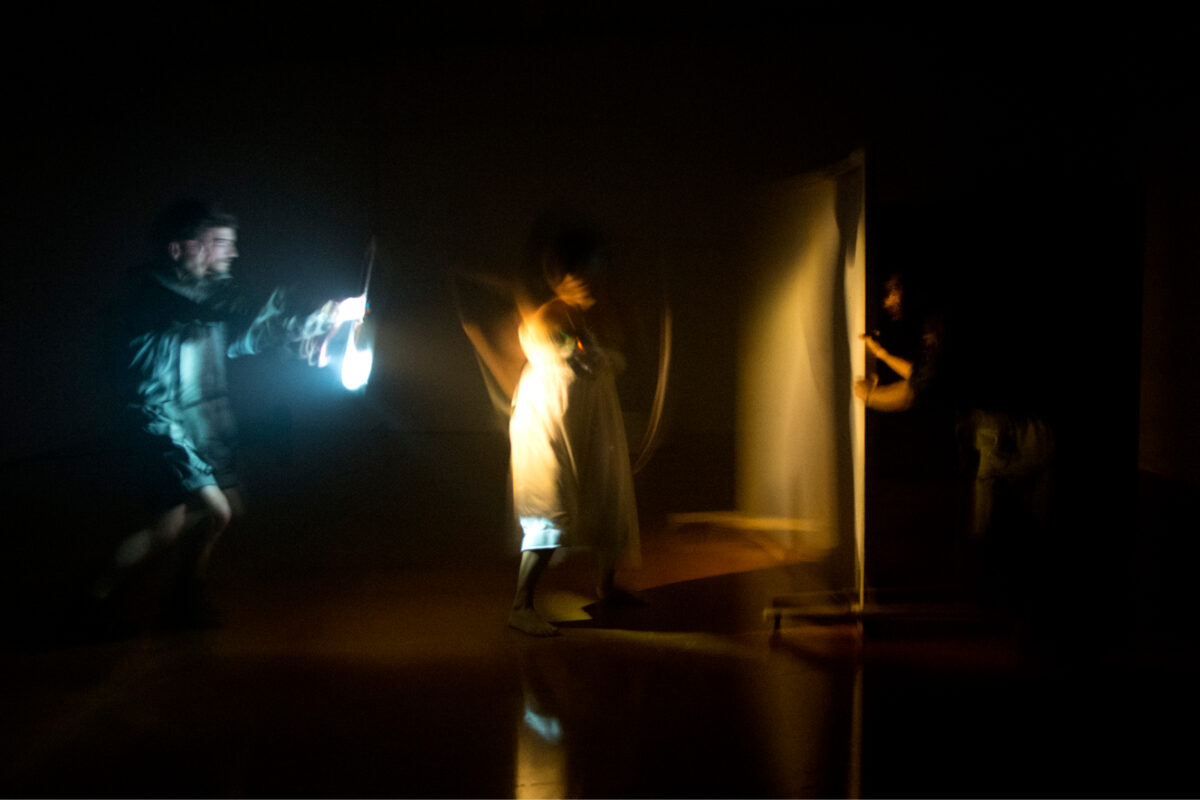
My mother is a psychoanalyst. When I was a child, I used to steal Foucault’s books. That’s when I started to try to understand the history of madness. I was always interested in not submitting to the modern mandates of power. I was always interested in “the abnormal”, the differences. Respecting differences and developing them seems to me something very rich. That was the germ that I later developed in connection with our current context, especially with technology, with technological devices that can empower us or not -depending on how we use them-. Not to fall into automatism, not to lose ourselves. It is very easy to fall asleep in the automatism of daily life that takes you and takes you away. It has happened to all of us at some point.
I never felt dance was a duty to be. It’s not about how I should dance or how I should compose. I never felt it or developed it that way but in relation to how I am, how I imagine, and how I need. On the one hand, there is my need to express myself and to process life, to bring out my inner monsters in this discipline. On the other hand, there are the stagings and what they generate, to generate trips for those who want them. What most defines my stagings is this: an invitation to get involved. That it is a journey that moves you, we will see what. On the other hand, it is also a craft. I find and polish ways to systematize certain things. This is where teaching comes in as a desire to pass on that experience or that trade to others so that they can find their own ways. And that everything is not a great volatility. So, systematize to be able to develop and carry out what you want. I think there is a mixture of volatility and systematization.
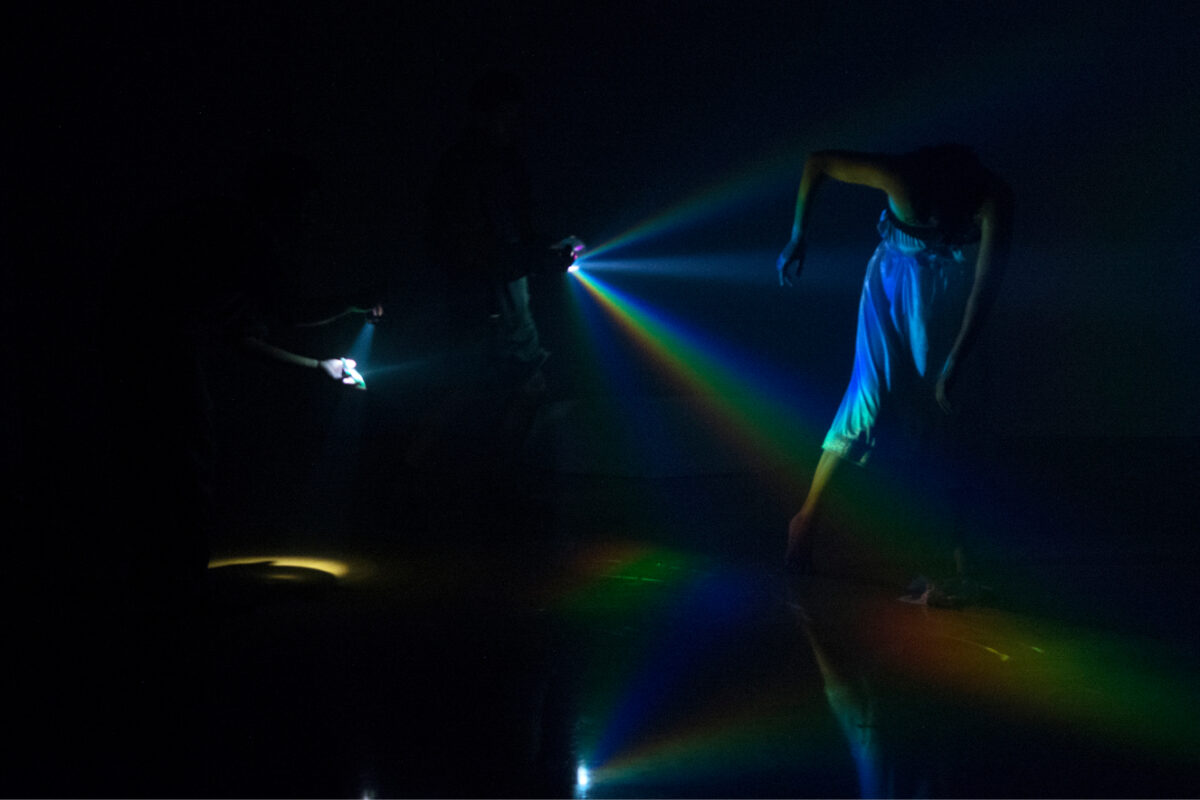
The ductile spaces, Formato living and the Fiestas sintomáticas
My way of understanding staging is cinematographic. When I imagine a staging, I do not only imagine a body moving, but everything that is perceived: the sound, the hairstyle, the clothes. Everything builds. In my first works, I worked with projections. Nico Richard, a great filmmaker, generated incredible videos that we composed for the scene. There were projections and televisions, images that dialogued with what was happening at the moment. In other words, the scene was the movement of the live bodies, the movement of the videos, plus the lights.
I was lucky enough to cross paths with a collective of experimental illuminators, the Fluxlians, in several projects. In those years we were in the trenches, testing and testing at parties. We did several works together, working on the performative part of the shows. We have crossed paths in different contexts and that also taught us a lot, that malleability: what we do in this basement, what we do on that huge stage with a lot of technical possibilities, what we do during the day, outdoors in the street without any technique and what we do in an independent theater.
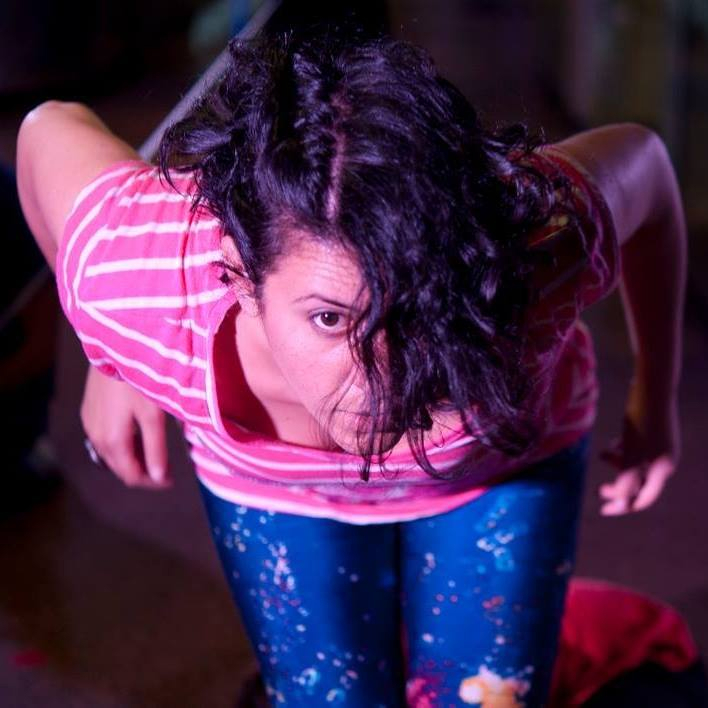
The crossing always nourished me, this cinematographic imagination, more visual. Light is wonderful for building spaces: it allows you to assemble and disassemble spaces in a second. It’s not the wooden or cardboard wall that enters the stage and leaves. The possibilities that light gives are especially interesting in the independent self-managed context, where there is no mega scenography. I see light in connection with the virtual, because it creates spaces that are somewhat immaterial, that with a click disappear and can mutate.
All spaces have something beautiful that enriches the material. Materiality is always a means to express that boiling pot. If the pot is boiling, it can crystallize in the format of a work in a room – careful and lasting forty minutes – or it can go out to the street, or it can become an audiovisual work. I discovered this in the process of doing. What you are cooking is decanted and can crystallize in different ways. It taught me a lot to try, week after week, in spaces that were not part of the conventional circuit. For example, doing things in bars.
Formato living was born in a bar. At that time, improvisation was not yet so widespread. The modes of creation were more those of spending one or two years in the cave and then mounting a work. And in the works, currents are installed. There were periods of “now all in nightgowns”, and others of “now all field works”. This “now all works of…” attracted my attention a lot. It even happened with the ways of dancing: for example, “Now we all do flying low”. I felt the need to look for something more agile. Besides, I noticed that although dance works with music, in Buenos Aires -which is the city where I live- there was not so much dialogue between dancers and musicians. That’s how the desire arose to compose duos, a dancer and a musician, in sets of two to fifteen minutes- two or three duos per date. What was happening was pure improvisation, they were not things that had been put together beforehand. There were people who knew each other on the same date. There wasn’t one duo that looked like another, and that’s a lot.
And what happened in Formato living, is that even being present those currents that I mentioned before, because it was improvisation, each person who participated put himself in check, put himself in play. There were people with a lot of experience on stage who called me a while before the date and told me: “I’m nervous, I don’t know what I’m going to do”. Beautiful things happened and they were all very genuine in relation to who was there. And what was there was a bond, which could not be avoided because when improvising in that one-on-one, you could not avoid getting into a dialogue. There were two people bringing out those fifteen minutes.
Fiestas sintomáticas, parties that we organized with a collective of artists from many disciplines, was another beautiful breeding ground. Out of two hundred people, maybe one hundred and eighty would go to see the bands that were programmed, and they would suddenly find themselves with some drilling, some dance, or some super 8, crazy things that they didn’t even know existed. Relating with people who didn’t especially go to a dance hall to see dance trained me in that ductility with spaces. You had to go through the tide of people, stand with a light bulb, and generate a trip that no one expected. It was a great training.
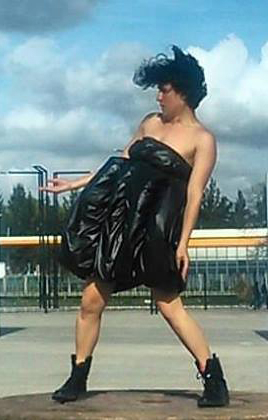
Dance after the pandemic
The pandemic generated many movements. On the one hand, it highlighted something we already knew: the precariousness with which we work in dance is absolute. While there was awareness, now there is more. This evidence of precariousness has to accentuate the struggle that already existed, and on the other hand, invent new ways of creation. We cannot expect all the solutions to come from the institutions.
In relation to the creative aspect, there was a need for a lot of ductility, a linkage with the visual outside the traditional space of the hall. There were many people experimenting with the camera. We are still in the midst of a crisis and we will see how it will turn out, and how much there is, besides, the desire to go back to what was before, which is something impossible -I am referring specifically to going back to the theater-.
We all feel, at this time, the lack of physical encounter. In all the reflections since the beginning of the pandemic, the impossibility of meeting, and the lack of embrace appeared. We all felt it on our skin. There was something about putting into play the body and everything that goes through our bodies. It is necessary to see how dance capitalizes and develops this. The body, our bodies, are crossed by many things. What interests me is not to talk about my anatomy but about what makes my skin crawl. Not to talk about the anatomy of the epidermal tissue, not to go to that cold theorization, but to be traversed, to the entrails, and see how it comes out, turned into what, to the outside.